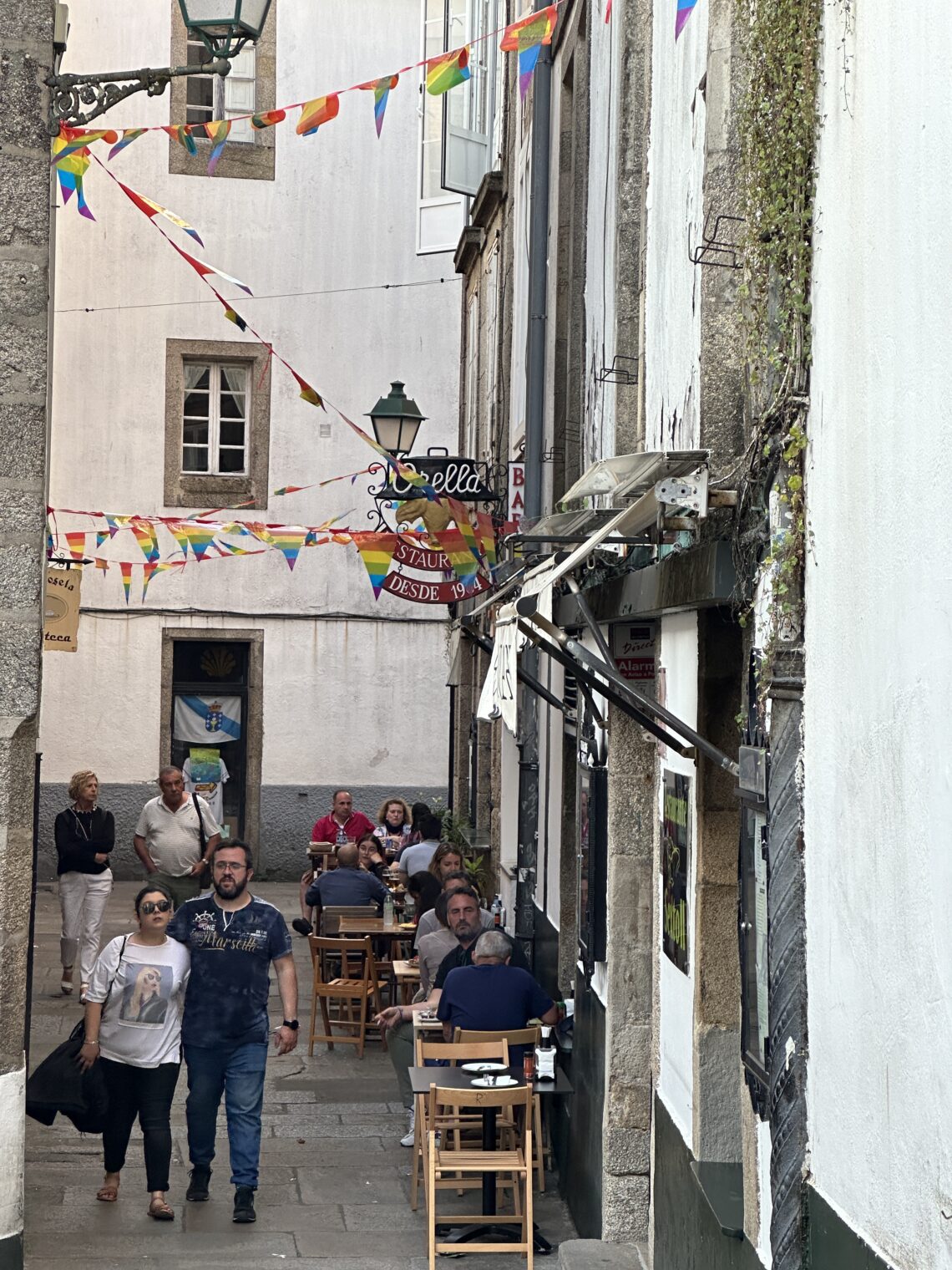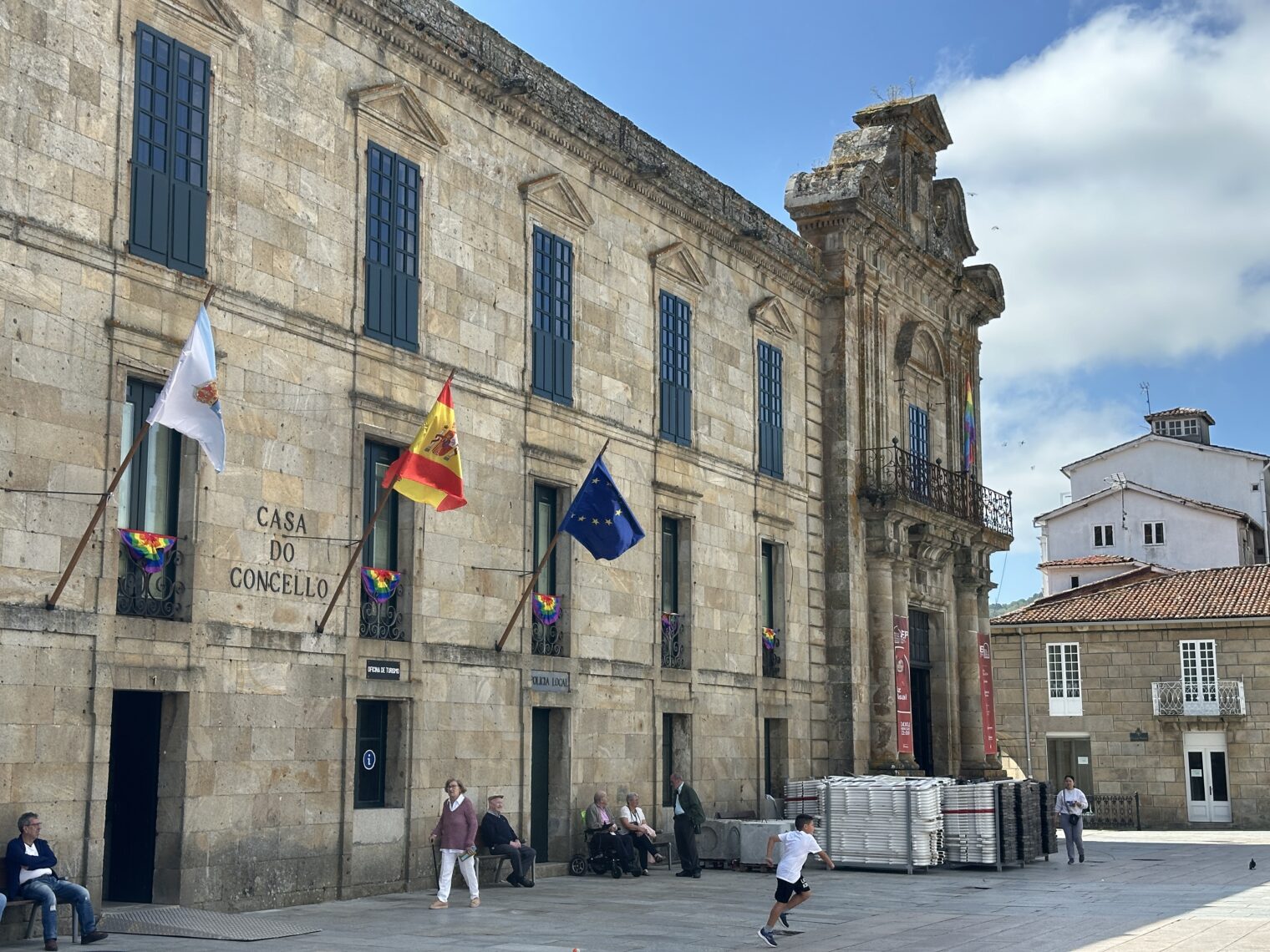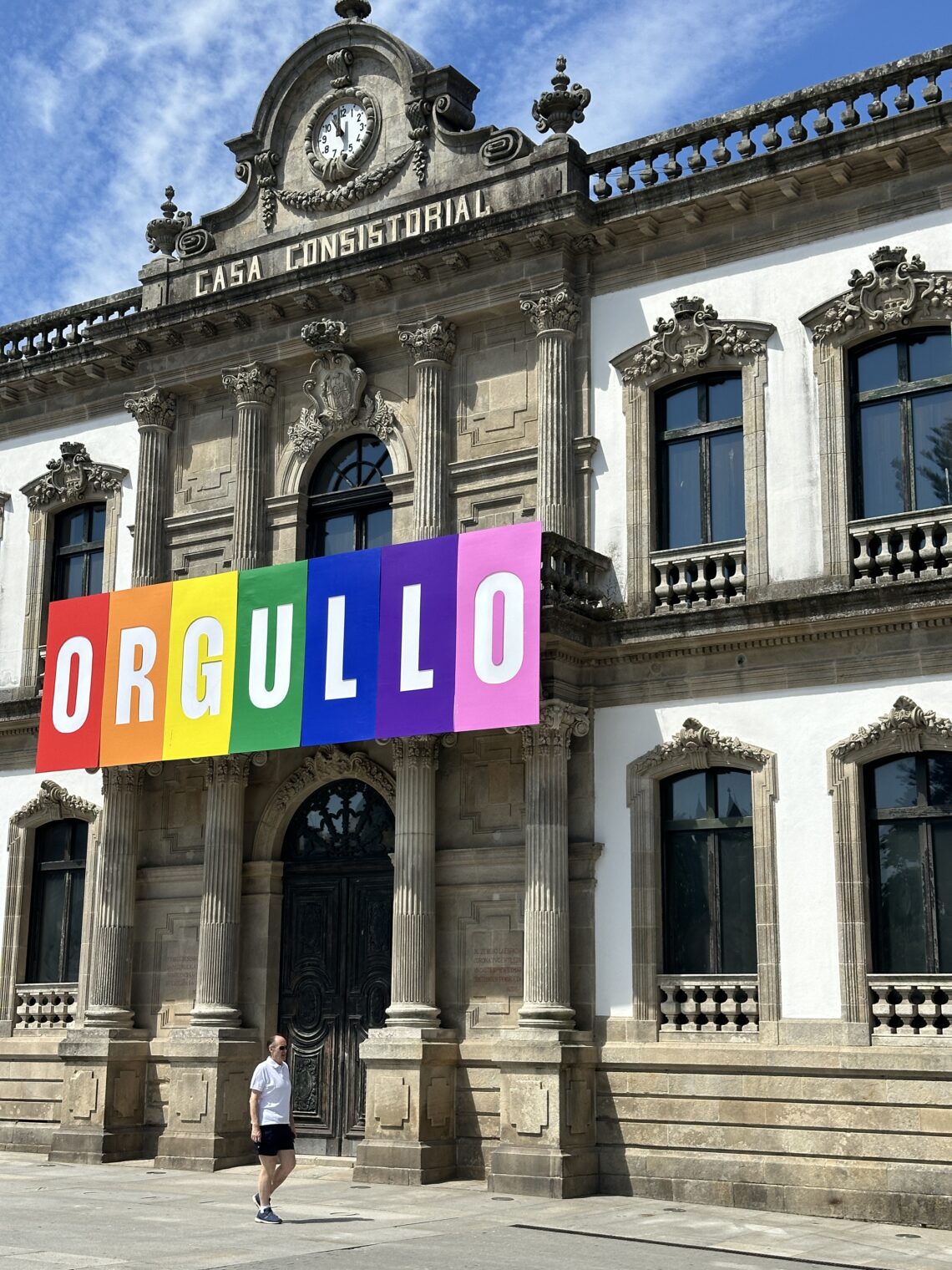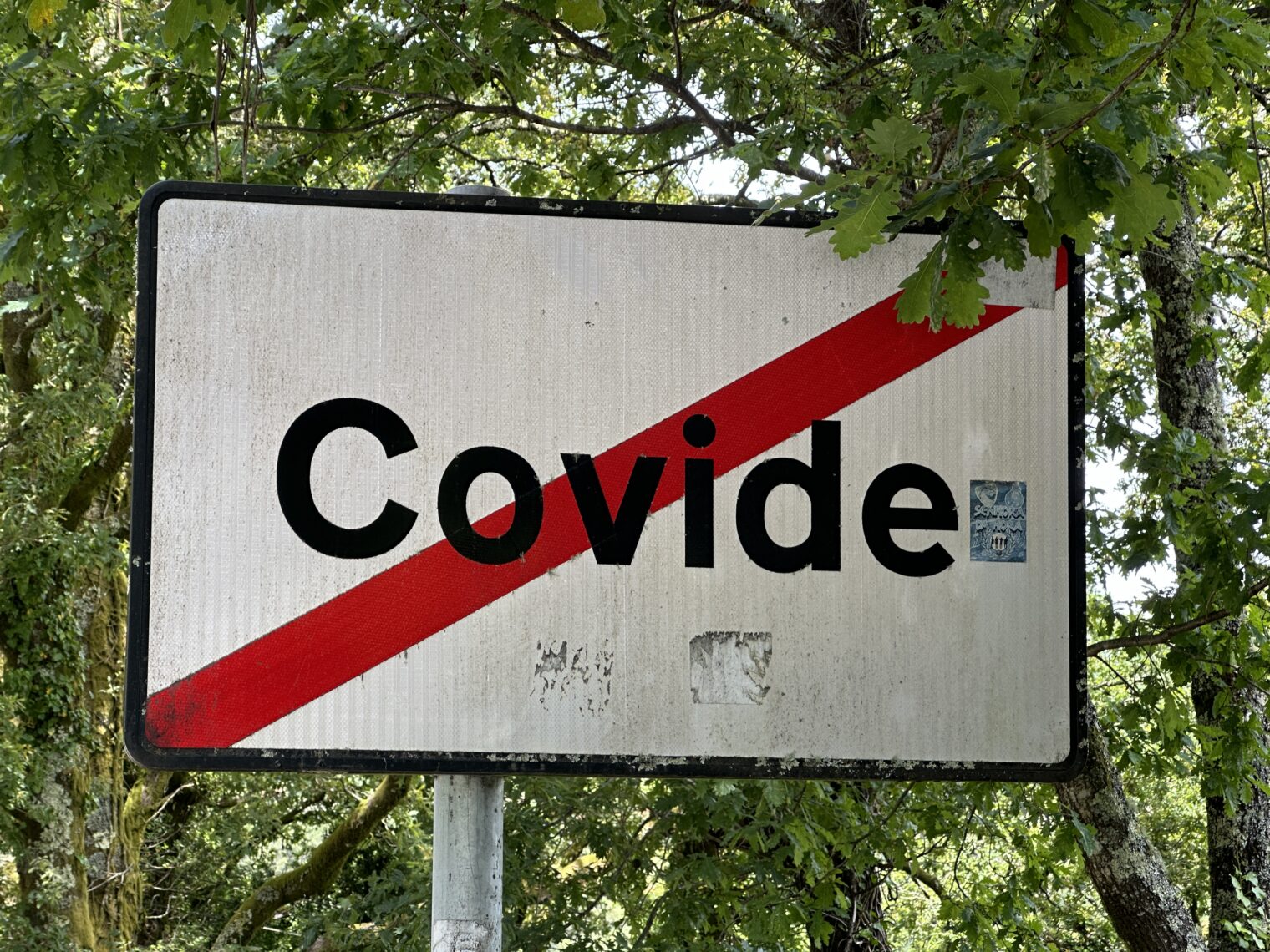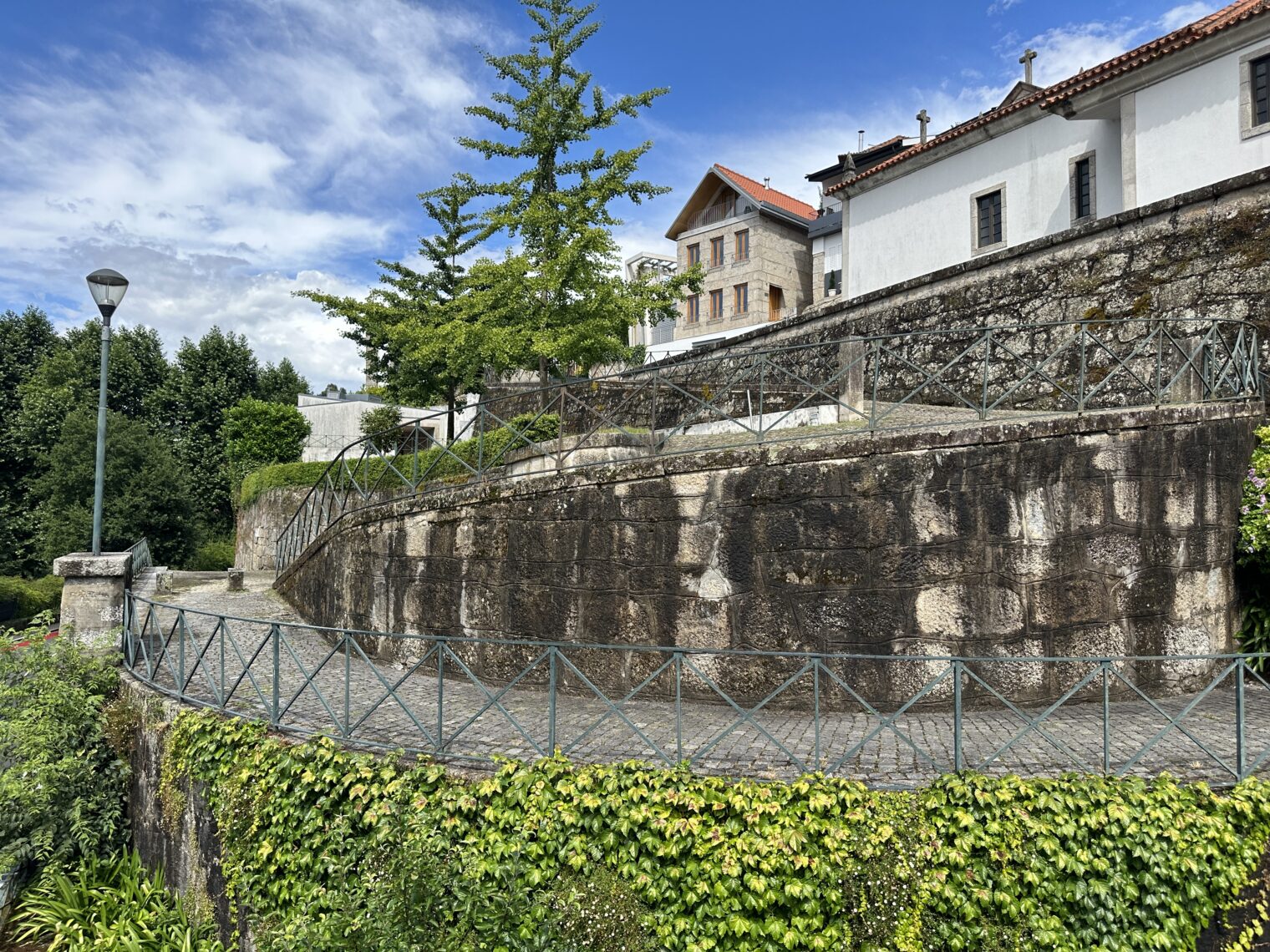Santiago de Compostela and End Stage Christianity
Santiago de Compostela is the holiest Christian site in Europe, being the supposed burial place of St. James, and pilgrims have been walking there for more than 1,000 years. Suppose that a pilgrim spends a weeks or months walking from France or Portugal to this sacred site, what does the committed Christian find on entering the old city? An official rainbow crosswalk and streets covered in sacred Rainbow Flags:
Here’s a different crosswalk in which we can see the directional sign for the Camino and a Rainbow-enhanced crosswalk in the same frame (multiple pilgrimage routes enter the city at different points):
Suppose that the tired pilgrim wants to rest in a park and be fresh before transitioning (so to speak) over this sacred pavement?
The rested pilgrim will walk past a Queers for Palestine display after entering the city:
The Praza do Obradoiro, adjacent to the Cathedral, is the traditional gathering place for pilgrims. It has been decorated with two Joe Biden-style official trans-enhanced Rainbow Flags (the “True Flag”?):




What if the pilgrim wants some ideas from the city’s official tourist office, a few steps from the Cathedral?


Perhaps the Christian pilgrim is tired and needs refreshment? It will be served by someone in a sacred outfit:
Pilgrims can dine with an overhead canopy of Rainbow Flags:
If they have money left over, they can buy souvenirs:
A variety of stores practice Rainbow-first Retail:





(“Orgullo” means “Pride” in Spanish)
Can the pilgrim prepare for the rigors of Rainbow Flag worship while on the road? Absolutely! If the pilgrim happens to walk through Celanova, Spain, for example, he/she/ze/they will find that the former monastery is now a town hall and that a Rainbow Flag is larger and higher than any of the government flags (tough to see because it had been rolled up by the wind, but it is in the upper right corner):
There were rainbow flags in Ourense as well, but Pontevedra, Spain has gone a little farther with its town hall:
The transition from traditional Christian to Queers for Palestine is encapsulated neatly in Pontevedra in which pro-Palestinian graffiti is adjacent to a ruined monastery:


A clothing store in Pontevedra practices Rainbow-first Retail:
Based on the above, is it fair to conclude that the inevitable End Stage of European Christianity is Rainbow Flagism and/or Queers for Palestine? Spaniards were willing to fight for centuries to make the Iberian peninsula completely Christian. Now Spain is covered in the sacred symbols of Rainbow Flagism and is on track for a conversion to Islam via immigration demographics.
For readers who ask “Didn’t you take pictures of anything other than rainbow flags in Santiago de Compostela?” here are some photos inside the Cathedral (get there 45 minutes prior to a mass if you want a seat, even though there are at least four masses per day; no need to dress up because the masses accommodate pilgrims who might have arrived dusty):




Here’s the apparently-never-used front entrance:
Don’t skip the Cathedral Museum because it gives you the chance to look over the main square where the pilgrims gather underneath the Trans-enhanced Rainbow Flags. Try not to show up on a Sunday afternoon/Monday morning as I did because most of the museums are closed all day Monday and may close early on Sunday. I had especially wanted to go to the pilgrimage museum, but will have to some that for another Pride.
Here’s an image taken from a balcony that is accessible only from the Cathedral Museum:
Does it make sense to do the pilgrimage? I’m not sure if modern pilgrims have mental space to reflect the way that pilgrims did 1000, 500, or even 50 years ago. Why not? The smartphone. If you’re getting emails about bills, projects at your house, things happening at work, etc., you’re not in the same mental place as a Christian pilgrim was in the pre-smartphone era. One group that I met seemed to have combined some of the best of the old and new worlds. They signed up for a tour with Active Adventures and eight of them were guided and shuttled over a monthlong pilgrimage route in a little more than a week, starting in Bilbao. When the (French) Camino was an interesting and peaceful footpath they walked (8-10 miles per day). When the Camino coincided with a boring/busy road, they hopped a shuttle bus.
Full post, including comments




